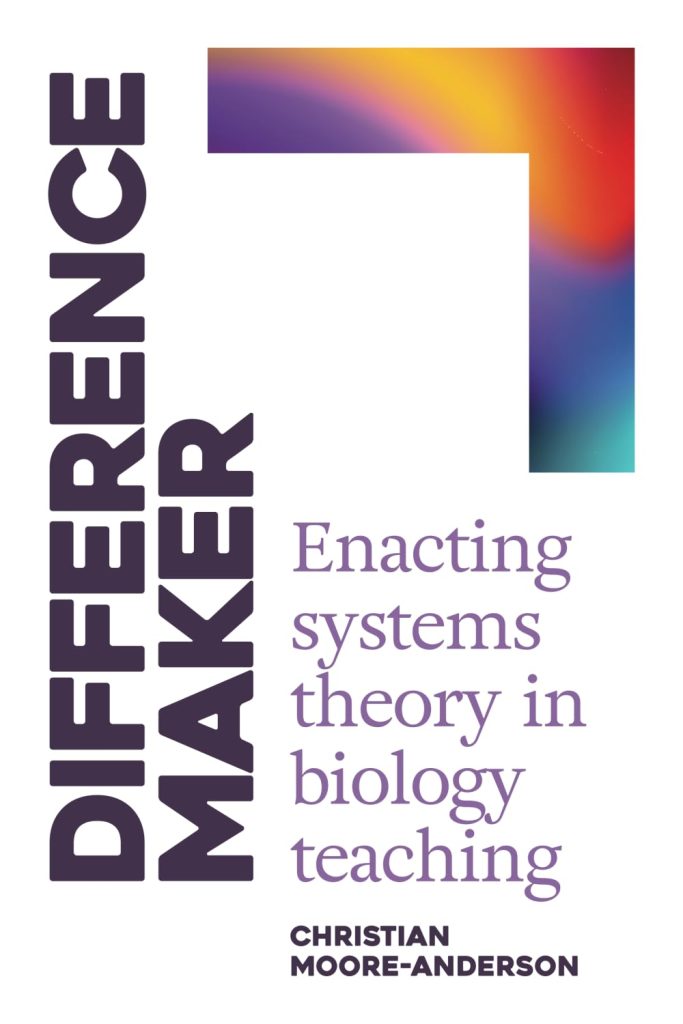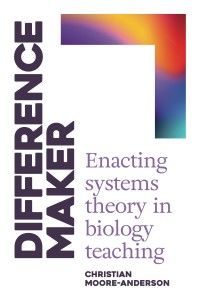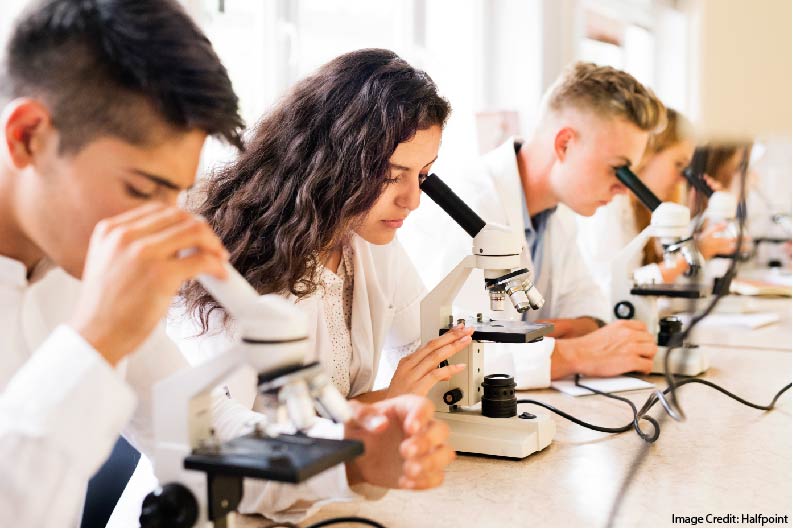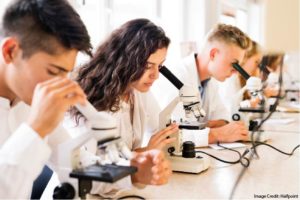Today’s book review is by Beth Hawks.
Teaching Science is a Challenge
Science classes cover a massive amount of content knowledge, and it can feel overwhelming finding the best approach to teaching it without feeling like students are merely acquiring a set of disjointed facts.
In the introduction to his book, Difference Maker: Enacting Systems Theory in Biology Teaching, Christian Moore-Anderson sums up the challenge well, when he says, “I’m sure you’ve felt – at some point – that to grasp biology was to master an encyclopedia.”
For some time, he had taught in most of the typical ways, but he felt he was tied to creating resources and activities for students and that students still weren’t seeing the deeper connecting threads of biology.
Time for a Change
As with many things, the move to online teaching during the pandemic motivated him to make a change…because what he had been doing was no longer working.
This concern led him to the world of cybernetics and systems theory; and moved him from a sense of mass knowledge transfer to one of teaching biology from a set of unifying principles.
As he dug even more deeply, he found that he wasn’t just teaching about systems; he was enacting systems theory as a method of instruction. He co-created diagrams with students and engaged them in dialogue to reveal their understanding.
By doing so, he created an interactive feedback loop that allowed him to respond flexibly to student needs.
Model Found in Cybernetics
The book begins with a few chapters of explanation of cybernetics. (Don’t let the terminology of “cybernetics” frighten you. It is not necessary to have a deep understanding of all of these terms.)
After I set aside my mental images from Star Trek of Dr. Noonien Soong creating Data’s positronic brain (my first exposure to the word cybernetics), I was able to see his blending of two aspects of the discipline.
Conversation theory posits that – since meaning is made in the mind of the listener rather than being transmitted by the speaker – we can have a shared understanding of meaning only through dialogue. The teacher explains, but then he discovers what the student heard through conversation.
Moore-Anderson describes doing this through multiple choice questions or open-ended questions; he also acknowledges that it can be done with other methods (e.g. mini-whiteboards, written answers on paper).
The law of requisite variety – When a system is complex, it can only survive if its ability to adapt is equally complex. In other words, there must be a variety of responses to a variety of changes. If a teacher has only a small set of responses when something happens in her classroom, she won’t be able to adapt to the needs of students during a lesson.
He combines these theories into a model of instruction he calls “the recursive teaching model.”
The teacher explains, while the student interprets. Then the student explains what they understand while the teacher interprets. This cycle keeps looping back on itself until they agree on their understanding.
Moore-Anderson provides guidance by opening each section with a key idea and walking through the process of implementation in the classroom. He includes the conversations he has with his students as well as the diagrams he creates with them during those conversations.
Have Students Notice Differences by Predicting Outcomes
After setting up his foundational theory, Moore-Anderson gets to the heart of his new practice: having students perceive distinctions in the concept being taught.
He defines distinctions as “differences that make a difference to the observer.”
As teachers, we often begin with sameness – giving multiple examples of a new concept to solidify students’ recognition of the standard. This strategy, however, shows only the idea itself and not its interaction with a conceptual whole.
Having students repeat similarities in their own words might not give them a full grasp of the influence they have on the biological system overall.
Moore-Anderson argues that we should begin with variations of the concepts so that students can see what difference a change would make. He prompts students to notice these differences (and the difference they make) by posing “what if” questions.
- What if someone drinks sea water rather than fresh water?
- What if the predator in this ecosystem suddenly disappears?
- What if this heart valve were missing?
- What if the sugar concentration was increased in this solution?
When students first predict the outcome of a change, and then add those changes to diagrams they create together, they arrive at a shared understanding of each concept. This approach lets them understand in a deeper way than simply explaining how something works and having students paraphrase that explanation.
Moore-Anderson restricts the responses to keep things from getting out of hand by giving choices like, “Will a change in X make Y increase, decrease, or stay the same?” and having students defend their answers.
Practical Examples Inspire Teachers
The true strength of this book for me as a classroom teacher comes from his descriptions of using this method in his lessons.
When Moore-Anderson moves from summaries of cybernetic theories into examples of actual classroom conversations with students, he allows me to imagine implementing his method with my own students.
As a teacher, my favorite education books are those that inspire ideas outside of those mentioned in the writing, and Moore-Anderson does exactly that throughout each chapter. As I read his stories, I was able to picture myself having similar conversations with my students and thought of other topics to which I could apply his method.
Difference Maker gives me a way to think about content delivery rather than prescribing an exact method for me to copy.
Is It for Everybody?
The Difference Maker method might not be equally appropriate in all settings.
I imagined my middle schoolers might find this approach frustrating because they lack the foundational knowledge to make reasonable predictions. On the other hand, I thought my juniors and seniors would thrive with these sorts of classroom conversations.
I trust Moore-Anderson when he says he applies the method in class with eleven year old students, but I’m not sure I would. As with all techniques, success relies on adapting them to your context.
As the title makes clear, this book is intended for biology teachers. Since all biological processes have noticeable cause and effect relationships within systems, that makes sense.
I had a bit harder time recognizing topics in which I might apply it to chemistry and physics. So, I will definitely recommend this book to my biology teacher friend and suggest that he loan it to the environmental science teacher across the hall.
As a chemistry and physics teacher, I might want to have it in the back of my mind as I planned some lessons, because it would provide a way of thinking about how to explain cause and effect. However, I wouldn’t make it a regular practice as Moore-Anderson does with biology. (Did I mention earlier that it is good to adapt to context?)
Can I Be in This Class?
My biggest takeaway from reading Difference Maker is that I would have loved to be in this biology class when I was a student. I would have absorbed more, seen deeper threads, and remembered more. I would have walked away with a better understanding of myself and my relationship with my environment.
Beth Hawks taught middle and high school science for 25 years, serving as the science department chair at GRACE Christian School in Raleigh, North Carolina for 17 years. A graduate of Oral Roberts University, Beth has taught 8th grade Physical Science, Physics, Chemistry, Algebra IB, Health, Photography, and Yearbook. She frequently provided professional development to colleagues in her role as resident brain enthusiast and has now moved into consulting full time under the name The Learning Hawk.
You can hear Beth speak at our Science of Learning conference in NYC in April.





